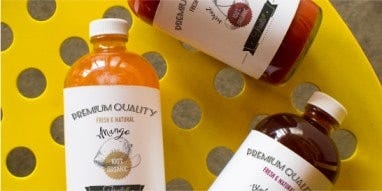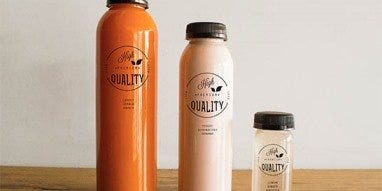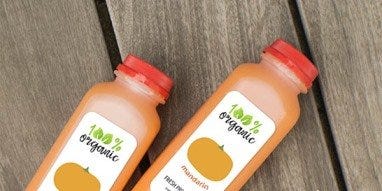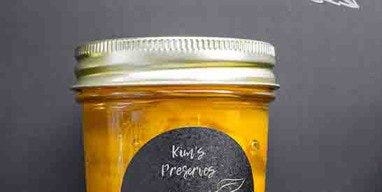Home Canning and Preserving Resource Guide
https://pixabay.com/photos/jam-jars-fruit-natural-food-428094/
Throughout history people have sought ways to preserve food in times of plenty to guard against scarcity in harder times. Canning and preserving food at home has long been an important part of homemaking. The 20th century saw the growth of commercially prepared foods, which included canned goods and the birth of the frozen food industry. There is now a resurgence of interest in home preservation methods. For people with memories of pantries filled with pickling and canning jars this is a welcome return to a beloved tradition.
For those new to canning, learning how to safely preserve food sometimes feel daunting. Other than glass jars, what other equipment do you need? Are all vegetables suitable for canning? What about proteins, are those able to be put up in glass jars? There is a wealth of information about canning and other preservation methods available. Various government agencies regularly publish best practices, safety tips, recipes and other useful information for both the beginning and experienced home canner. Those interested in learning more might consider taking canning classes locally through community organizations or continuing education programs. If there aren't nearby classes many websites offer videos and webinars.
The National Center for Home Food Preservation
The Cooperative State Research, Education and Extension Service partnered with the U.S. Department of Agriculture to create the National Center for Home Food Preservation. The Center offers a clearinghouse of current research on home food preservation along with a robust section of lesson plans to learn preservation methods. Ever wondered if you should use a glass or plastic jar to can tomatoes? This is the place to find the answer.
The University of Georgia Extension Service offers in-person events and classes. The website is also full of articles and publications detailing preservation methods and best practices.
This blog style website offers canning tips directed at foods currently in season. Want to can Vidalia onions? Find instructions here.
Let's Preserve: Basics of Home Canning
This comprehensive site is hosted by Penn State's Extension office and thoroughly covers the basics of home canning.
The Extension office of the University of Minnesota offers comprehensive recipes and tips for preserving a variety of foods.
This thorough curriculum put together by Maryland's Cooperative Extension office teaches best practices for high and low acid foods, jams, jellies, and more.
Home Canning: Keep Your Family Safe!
The Office of Food Safety offers multiple tips and best practices for safe canning and food preservation.
Where to Find Safe Home Food Preservation and Recipes and Information
This guide from the Michigan State University Extension Office helps the home canner evaluate food preservation information and recipes.
The Centers for Disease Control publishes information about what botulism is, how to avoid it, and other canning best practices to ensure safe food.
Jams, Jellies, and Preserves with No Added Pectin
Oregon State Extension Service offers recipes and explicit instructions on how to successfully make and can jams and jellies without using additional pectin.
Cans or jars? What about using a bottle? The University of Illinois Extension Service produced several videos on canning which can be found on YouTube, including this video which shows you various pressure cookers and other needed canning equipment.
The Idaho Extension Serviced created this webinar which examines best practices and safety concerns in regards to using a modern pressure cooker to can or preserve food.
Colonial Williamsburg Food Preservation Fact Sheet
Have you ever what food was preserved in Colonial America? This fact sheet, prepared by History.org, discusses the different kinds of foods and preservation methods used by colonists.
The Food that Fueled the American Revolution
When we think of factors that help win wars canning isn't usually at the top of the list. That may change with this Smithsonian Magazine published this article which discusses how preserved meat helped Americans win the Revolutionary War.
The Kansas Historical Society details the various ways humans have preserved food throughout history.
This article offers a scientific look at the different methods of food preservation. The methods examined include canning, drying, irradiation, pasteurization, pickling, smoking, and the addition of chemical additives to preserve food.
Ahoy, Pass the Cabbage: Preserved Foods in the Age of Exploration
Food preservation developed not only so that people could eat, but so that people could eat a variety of foods even in conditions where variety was hard to come by. For most people, those conditions were confined to winter, but this History.com article explores why food preservation was so important to sailors and how it helped fuel the age of exploration.
The North Carolina Encyclopedia hosts an article from the Tar Heel Junior Historian which examines exactly how food was prepared in the 1800s and how food preservation influenced cooking.
Garden Wise: Choosing Vegetables Wisely for Home Preservation
Why do some canned tomatoes turn out beautifully and others turn into pink slime? This article will help you learn how to pick the best produce for canning or bottling.
This article explores the rich history of food preservation in Appalachia and also discusses why people can their own beans or pickles when they are widely available from commercial preparers.
Taste of Home offers up ten carefully curated recipes that range from classics (like pickles and salsa) to twists on classics like the Strawberry Basil Jam.
Surprising Things You Can Pickle
Stuck in a canning rut? Check out this list compiled by Good Housekeeping of twenty surprising things you can pickle. The list includes such surprising choices as figs, okra, and corn.
Preserving Time in a Bottle (or Jar)
The New York Times looks into the resurgence of home canning and offers up several sophisticated recipes and ideas for serving preserved foods.
Grandmother's Watermelon Rind Preserves
Watermelon rind pickles were a classic 20th century preserve. This recipe will tempt you into giving them a try.
Tomatoes, pickles, beans are all canning staples. But what about pot roast? This recipe tells you how to can the classic Sunday dinner.
Looking for an easy to preserve protein? Try this pickled shrimp recipe from Bon Appétit.
Summer Recipe: Pickled Yellow Squash
Summer usually serves up a bounty of yellow squash, and this recipe will help you learn how to can and save the summer crop.
Along with simple ingredients you can also can whole dishes, including those you didn't necessarily prepare to can. This article tells you how to safely can prepared soup.
If you like canning, what could be more fun than gathering together more people interested in canning and throwing a party where everyone can work together? This article provides all sorts of ideas and a timeline for hosting such a get-together.
Peppers: Safe Methods to Store, Preserve, and Enjoy
The University of California assembled this guide to properly preserve peppers.










